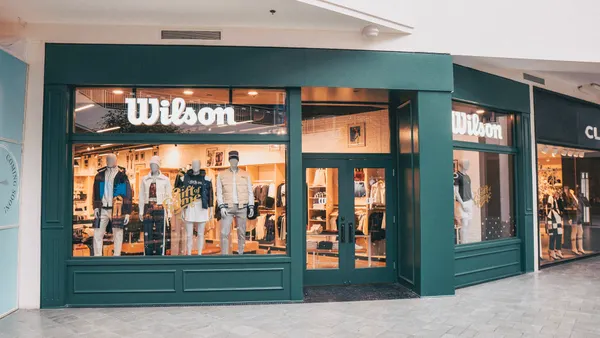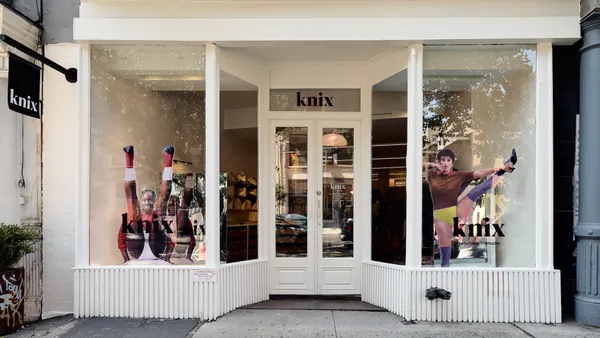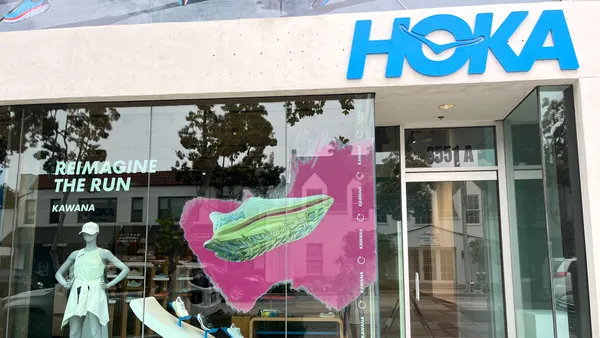Dive Brief:
-
E-commerce helped spike this year’s first big holiday sales push — the Tuesday before Thanksgiving through Cyber Monday — bringing in 14% more shoppers online than last year, which contributed to 18% growth in overall revenue, according to data from Slice Intelligence and its panel of 5 million online shoppers. Major U.S. retailers posted significant growth online, with Best Buy, Amazon, Apple and Walmart growing between 19% and 25%, according to Slice’s report, which was emailed to Retail Dive.
-
The overall number of online buyers grew more on Black Friday (15%) than on Cyber Monday (11%), Slice found. A Black Friday shopper’s average spend was $157.87, 13% percent higher than the $140.04 the average Cyber Monday shopper spent. In terms of volume, nobody could touch Amazon, whose sales were nearly four times those of its closest Cyber Week competitor, Best Buy.
-
But in terms of growth, Target outshone everyone — growing online sales 44% over last year. The mass merchant did well according to another study, from e-commerce research firm Edison Trends, which found that Target.com on Thanksgiving Day sold nearly 15 times what it does on a typical Thursday, an increase of about 4.5 times its previous four-week average. Target also more than quadrupled its order volume, welcomed three times more unique buyers to its website and had Cyber Monday sales that were nearly 10 times its previous results, according to the Edison report emailed to Retail Dive.
Dive Insight:
Unlike Amazon, which has been sending regular notices to the press about its prowess during the days it has awkwardly dubbed "the turkey five," Target did not comment to Retail Dive about how its own numbers jibe with the reports. A spokesperson referred Retail Dive to the company’s corporate blog, which is dominated by gift guides — the last post that discusses financials was the mass merchant’s third quarter report from two weeks ago, in which it warned of a tough holiday season.
The big-box merchant wasn't the only traditional retailer with a holiday boost. Best Buy saw a 4.5-time increase in both its overall order volume and unique shoppers, and quadrupled its online sales during Thanksgiving week compared to its previous four weeks of sales, according to Edison. However, Best Buy's average order spend dropped by roughly 25%. Walmart's average sales spiked 4.5 times, and Macy’s quadrupled its online sales compared to previous weeks in the month. But Target's return on the weekend was the highest recorded by Edison.
That online focus on customers, the many gift guides and holiday ideas on its site and its blog, may be the secret to Target’s e-commerce success this year, according to Matt Sargent, senior vice president of retail at Frank N. Magid Associates.
"You can see it now if you go to Target’s site," Sargent told Retail Dive in an interview. "They’re really working to create products together and really think about how people are buying, and Nordstrom does this too. But if you look at the sites at Macy’s J.C. Penney and Kohl’s, they are really focused on promotional versus a product focus. You can see the messaging. With what Target and Nordstrom are trying to do — there’s a great ability to understand what customers’ emotional stake is — You're seeing retailers push gift guides and recommendations, 'gift concierges.' It creates a sense of 'I don’t need to go into the store to maintain my relationship.'"
Sargent sees this as a major change from the days when legacy retailers like Target looked askance at e-commerce. (Amazon is trying to do this, too, but it's more difficult because its assortment is so massive, according to Sargent.) "In J.C. Penney’s and Macy’s defense — their customers are more promotionally driven and less research driven," he said, adding that the curation, gift guide and inspirational approach from Target, Nordstrom, Gap and others demonstrates new-found comfort in reaching customers online. "Before you saw a fear that online would cannibalize their sales, but there’s a decided shift," he said.
"The old rules were, you really wanted to drag customers in physically on Black Friday and get them to think about the rest of the holiday," he continued. "That doesn’t really apply any more because people are online."
This story is part of our ongoing coverage of the 2017 holiday shopping season. You can browse our holiday page and sign up for our holiday newsletter for more stories.













